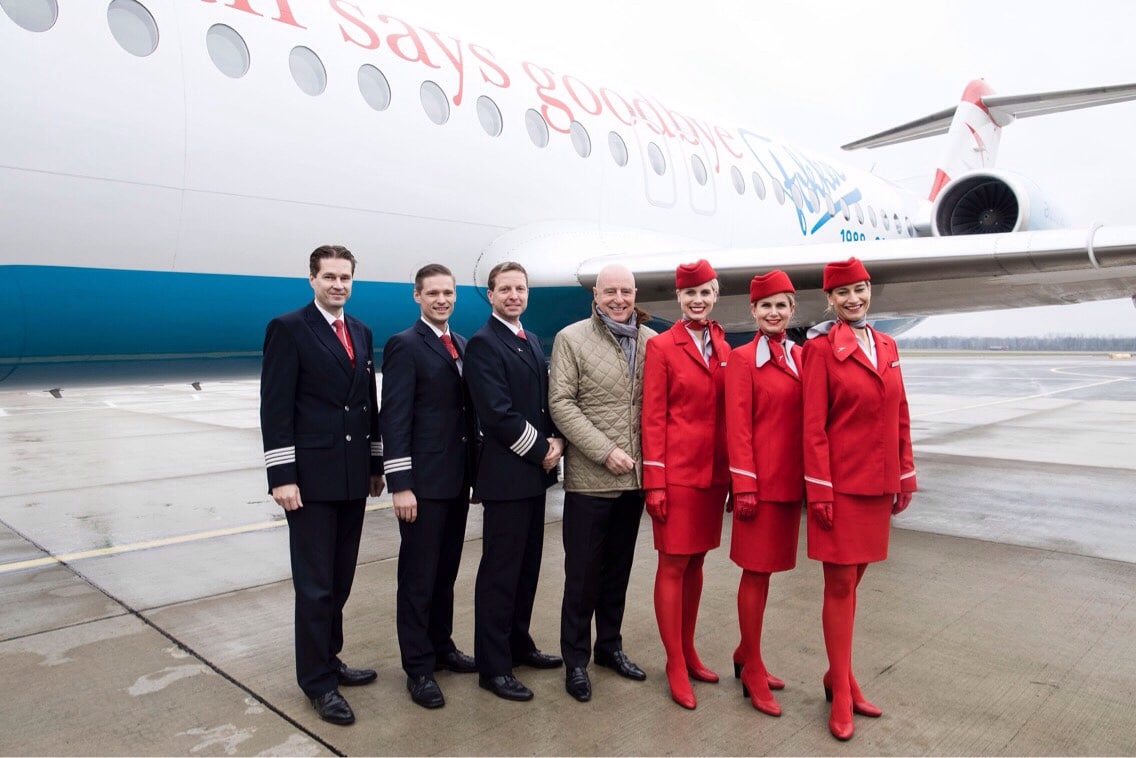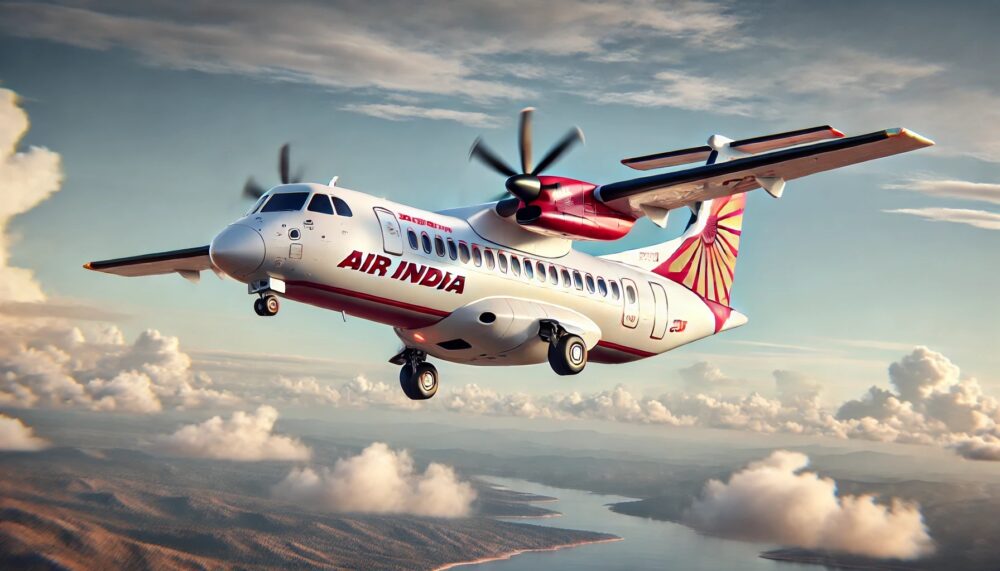Aviation
Bye Bye Fokker: The End of an Aircraft Era at Austrian Airlines

· Fans bid farewell to the Fokker fleet on special flight OS 1100
· Last Fokker jet to leave Vienna on its final flight at the end of December 2017
· Embraer fleet replaces Fokker aircraft
Today, on the morning of November 29, 2017, employees, invited guests and members of the Friends of Vienna Airport Association had the opportunity to officially bid farewell to the beloved Fokker fleet of Austrian Airlines via the special flight OS 1100. The last Fokker 100 aircraft still operated by Austrian Airlines, bears the registration number OE-LVE and the name “Zagreb”. The guests flew one last circuit over Austria in this aircraft under a clear blue sky. Austrian Airlines CEO Kay Kratky was also on board: “The Fokker jets were faithful companions over the last 29 years, and made a significant contribution towards the expansion of our dense route network in Central and Eastern Europe. However, the aircraft are getting on in years, and today we wanted to give the large fan community of our Fokker jets an opportunity to say a last Servus”.
The first Fokker 50 was authorized for operation on March 15, 1988 under the Air Operator Certificate (AOC) of Austrian Airlines. Two additional Fokker 70 jets were added in 1995. At that time, this type of jet was considered to belong to the next aircraft generation. Among the advantages were the low levels of noise generation and greenhouse gas emissions, combined with the higher speed and range compared to other aircraft models. Within the context of its Focus East strategy, Austrian Airlines acquired additional Fokker planes in 2004, including Fokker 100 aircraft. In 2015, the Austrian flag carrier decided to replace its entire aging Fokker fleet, consisting of 21 jets, with 17 modern Embraer aircraft. In August 2017, Austrian Airlines successfully concluded the integration of this new type of aircraft into its fleet.

Aviation
Air India Might Operate Tata-Made New Airbus C295 Aircraft

Tata Group’s expansion into the aviation sector continues to gain momentum, with Tata Advanced Systems Limited (TIAL) recently inaugurating the final assembly line (FAL) facility for the Airbus C295 transport aircraft.
Currently, Indian airlines are purchasing aircraft from ATR and De Havilland, focusing on shorter regional routes. These are propeller-based aircraft, similar to the C295. If Airbus and TATA go forward with this plan, it could be a major breakthrough for their business collaboration.
This international airline is offering free flight tickets to Indian travelers
If Air India shows interest in operating the C295, it would offer significant advantages. Since its parent group is involved in the aircraft’s production, Air India could benefit from streamlined access to parts and maintenance, leading to cost savings and operational efficiency.
This marks an exciting new chapter, as TIAL is also planning to develop a civilian variant of the C-295, which could potentially be operated by its own airline, Air India. If this vision comes to fruition, Air India might become the first carrier to operate the civilian C-295, marking a significant milestone for both the airline and the country’s aviation landscape.
The C295 can accommodate up to 71 passengers, close to the ATR 72’s capacity of around 78. This aircraft would be especially reliable for airlines, as parts would be readily available due to the assembly plant in India. While the C295 is primarily used for military operations, a commercial version would be a game-changer for the airline industry, providing a win-win situation for both Airbus and TATA. This could also lead to more competitive pricing.
Airbus Final Assembly Line Adapts for A350 Freighter Production
This move is aligned with the growing demand for regional connectivity in India, where smaller, regional airports require more versatile aircraft to meet travel needs. The C-295’s short take-off and landing (STOL) capabilities make it an ideal choice for connecting these regional airports, many of which have shorter runways that are not suited to larger commercial jets.
By introducing turboprop aircraft into its fleet, Air India could fill an important gap in the market, providing crucial connectivity to underserved destinations.
The potential introduction of a civilian version of the C-295 offers several benefits. First, it could significantly reduce operating costs for Air India, especially with domestic production. Having an aircraft manufactured within the country would allow for more affordable maintenance, support, and easier fleet expansion.
Three Major UK Airports Up for Multi-Billion Pound Sale
Furthermore, this move would complement the Make in India initiative, reinforcing the government’s vision to boost the country’s domestic manufacturing sector, particularly in the aerospace industry.
Additionally, the C-295’s versatility in both passenger and cargo configurations would make it an attractive choice for mixed-traffic regional routes. The fuel efficiency of turboprop aircraft over shorter distances also aligns with the need for cost-effective operations on regional routes, where airlines face increasing competition.
If Tata’s ambitious plans for a civilian C-295 materialize, it would not only strengthen the Tata Group’s position as a key player in both the military and civilian aviation sectors but also contribute to India’s rise as a competitive force in the global aerospace market.
For Air India, this shift towards operating a domestically manufactured aircraft would further underline its commitment to the country’s aviation future.
-

 Aviation2 months ago
Aviation2 months agoMicrosoft Flight Simulator Raises $3 Million to Bring Back the An-225 Mriya
-

 Airlines2 months ago
Airlines2 months agoQatar Citizens Can Travel to the United States Without a Visa
-

 Aviation2 months ago
Aviation2 months agoQatar Airways bans these new Electronic Devices on plane
-

 Defence2 months ago
Defence2 months agoWhich Country Has the Largest Fleet of Fighter Aircraft?
-

 Airlines5 days ago
Airlines5 days agoDAMAC Air: Dubai’s New Luxury Airline Offers Free Flights for Registration
-

 Airport2 months ago
Airport2 months agoWestern Sydney Airport Welcomes Its First Plane After 6 Years of construction
-

 Airlines4 days ago
Airlines4 days agoAir India to Launch aircraft maintenance training institute in Bengaluru
-

 Aviation2 months ago
Aviation2 months agoDid you know ? Once Boeing 747 carried 1088 passenger in 1991








